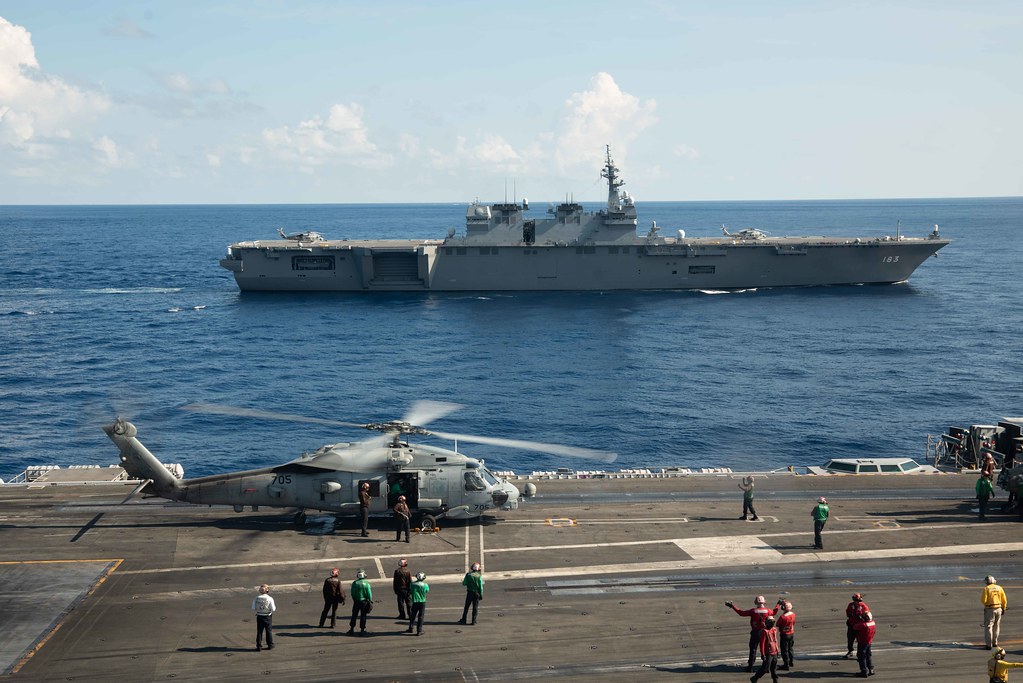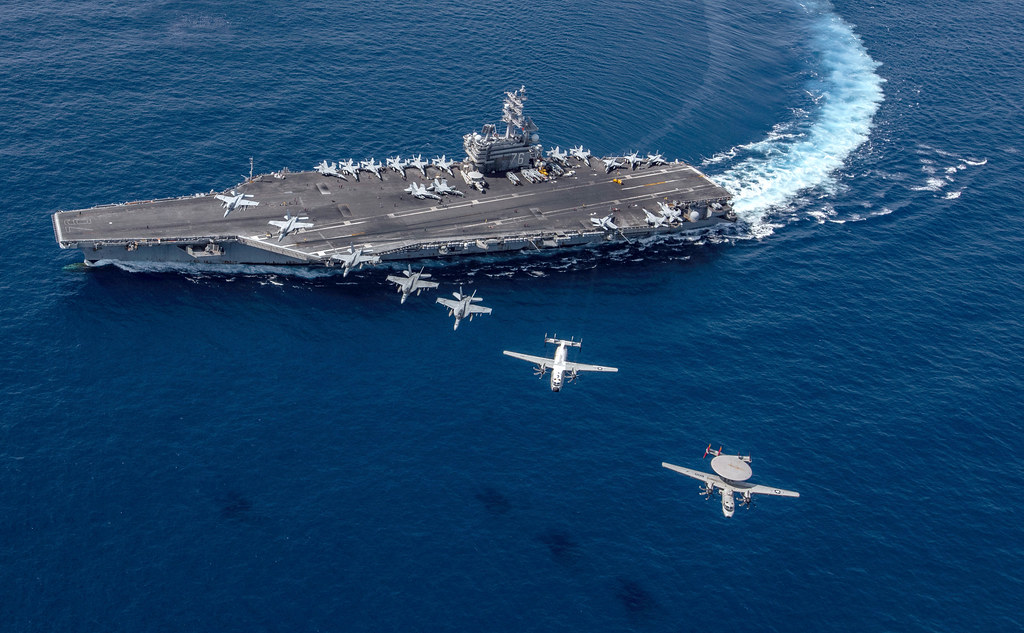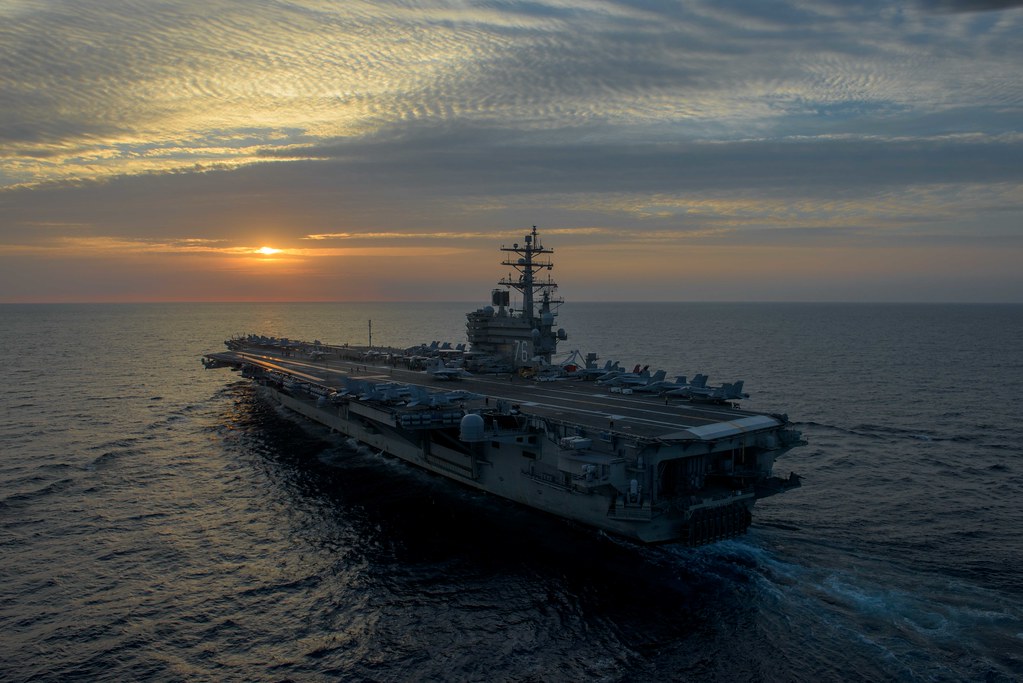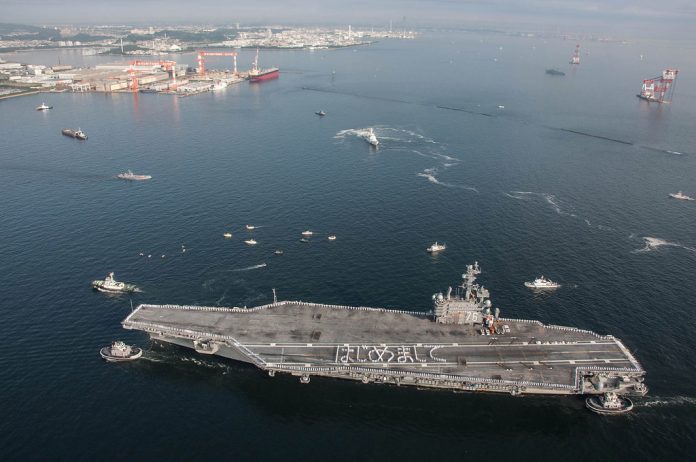
As the USS Ronald Reagan, a nuclear-powered Nimitz-class aircraft carrier, departs from its Japanese home port of Yokosuka, it marks the end of nearly a decade of deployment in a region rife with growing security challenges.

Pacific Ocean (July 25, 2005) Ð The Nimitz-class aircraft carrier USS Ronald Reagan (CVN 76) performs a high speed run during operations in the Pacific Ocean. Reagan and embarked Carrier Air Wing Fourteen (CVW-14) are currently underway conducting Tailored Ships Training Availability (TSTA). U.S. Navy photo by PhotographerÕs Mate 1st Class James Thierry (RELEASED)
The departure of USS Ronald Reagan — one of America’s largest warships and a nuclear-powered Nimitz-class aircraft carrier — comes at a time of growing tension in the face of increasingly assertive China in the Indo-Pacific.

On Thursday, in a poignant farewell, the USS Ronald Reagan was sent off by families and friends of its sailors, who lined the rails of the mighty warship, uttering “dewa mata” — “see you” in Japanese.

The aircraft carrier, one of the largest in the American fleet, has been a reassuring presence in the Indo-Pacific since it first arrived at Yokosuka Naval Base in 2015.

Earlier, during its deployment near the Korean Peninsula, the carrier contributed to Operation Tomodachi, following the 2011 earthquake, tsunami, and nuclear disaster in northeastern Japan.

From participating in dozens of multilateral exercises to visiting more than a dozen foreign ports, including a historic port call to Da Nang, Vietnam, last year, the USS Ronald Reagan has showcased the United States’ commitment to freedom of navigation and the maintenance of peace and stability.

U.S. Ambassador to Japan Rahm Emanuel emphasized the importance of the carrier’s mission, stating, “The USS Ronald Reagan and her crew have ensured that millions of people across the Indo-Pacific have been able to live their lives free of coercion, aggression and suppression.”

This assurance came at a time when tensions continue to simmer in the East China Sea over the Senkaku Islands, a group of uninhabited islets controlled by Japan but claimed by China, where it is known as Diaoyu.

Former Japanese Defense Minister Tomomi Inada underscored the urgency of the situation, asserting, “We have a sense of urgency that we must not let the East China Sea become another South China Sea.”

In a show of resilience and sovereignty, Inada joined an environmental survey trip near the disputed islands, where they deployed drones for land and vegetation surveys, a move that drew protest from China.

USS Ronald Reagan was the only American aircraft carrier deployed as a flagship of the Carrier Strike Group 5 under the U.S. Navy’s 7th Fleet, to a home port outside the U.S.

The carrier, accompanied by the two guided-missile destroyers USS Robert Smalls and USS Howard, is scheduled to transit in Bremerton, Washington, before moving on to its next assignment.

The impending arrival of its successor, USS George Washington, another formidable Nimitz-class carrier, currently near South America, promises a “seamless transition,” according to Ambassador Emanuel.

The carrier was accompanied by two guided-missile destroyers, USS Robert Smalls and USS Howard. It is scheduled to transit in Bremerton, Washington, later this year, before heading to a next home port assignment.

While tensions have escalated in the South China Sea between China and the Philippines and a number of other countries over maritime and territorial disputes, Japan is concerned about its dispute with China over uninhabited islands in the East China Sea.
Relevant articles:
– USS Ronald Reagan leaves its Japan home port after nearly 9 years, AP News
– USS Ronald Reagan leaves its Japan home port after nearly 9 years, ABC News – Breaking News, Latest News and Videos
– USS Ronald Reagan leaves its Japan home port after nearly 9 years, The Washington Post

